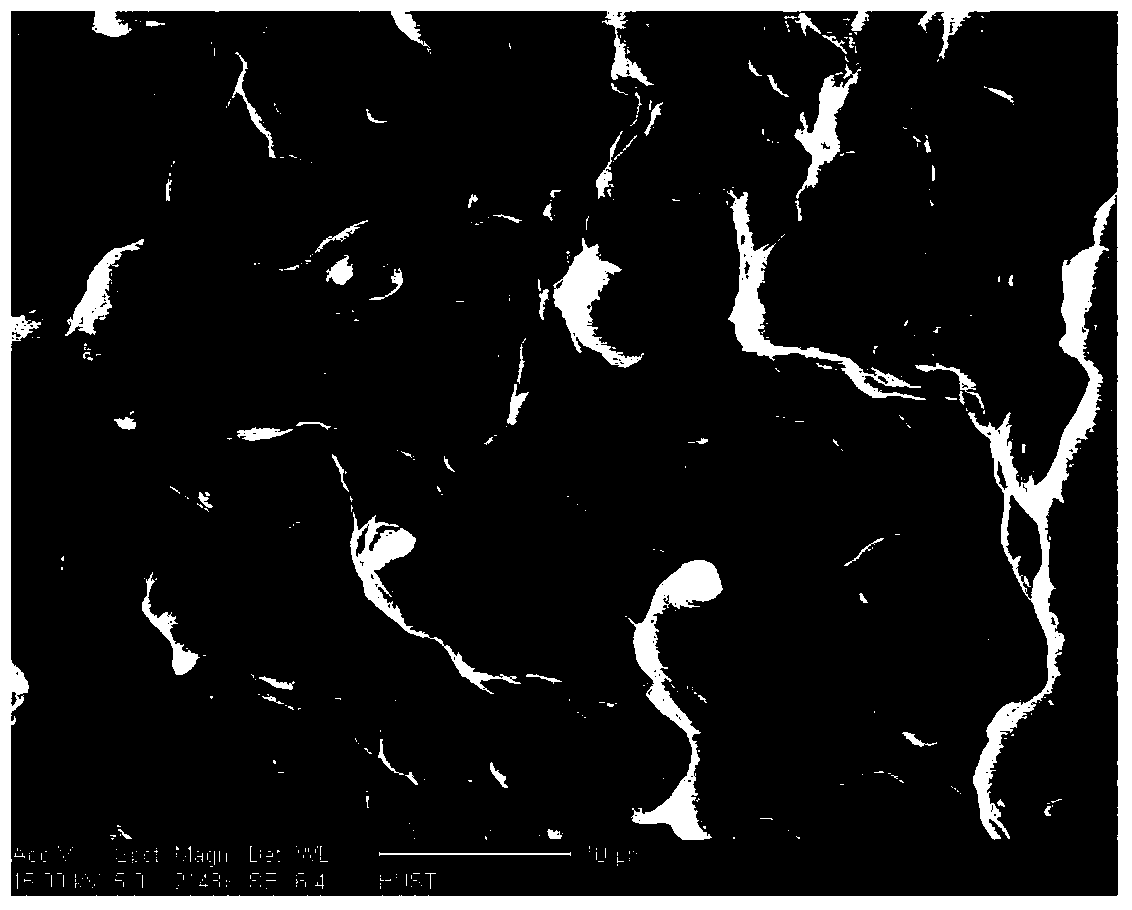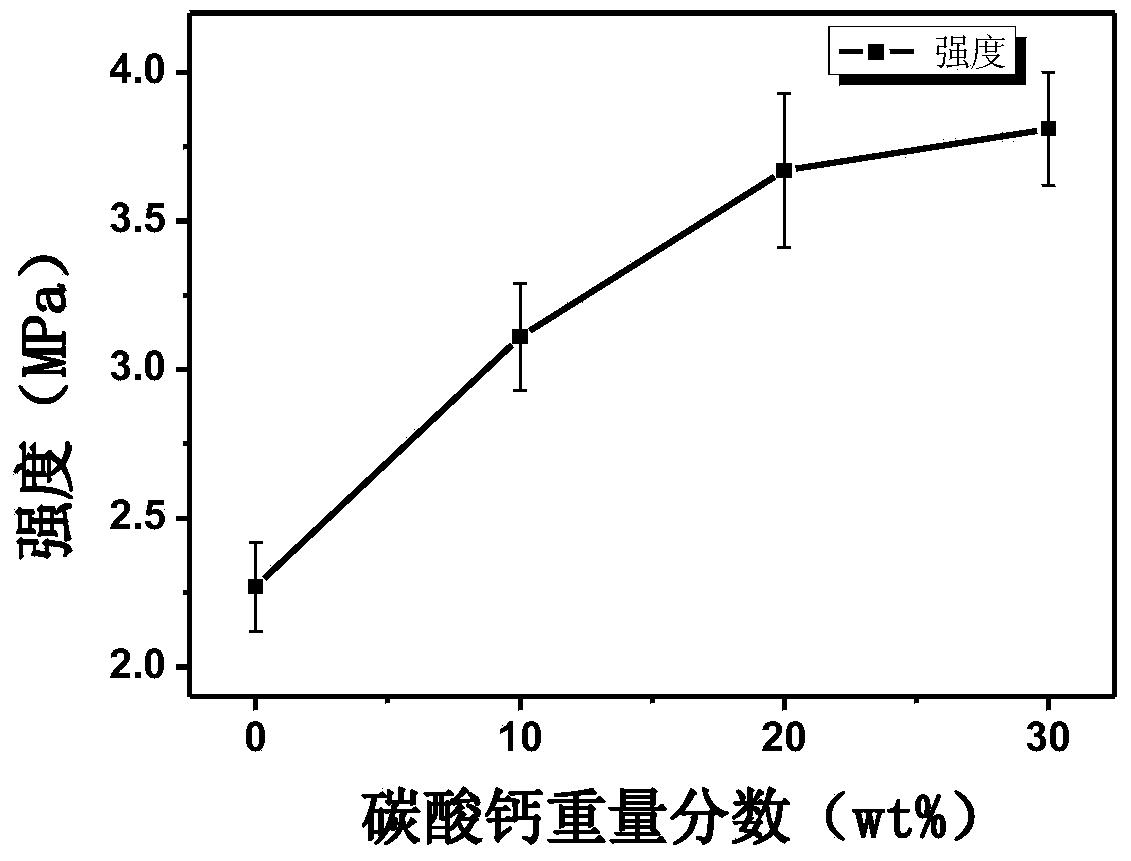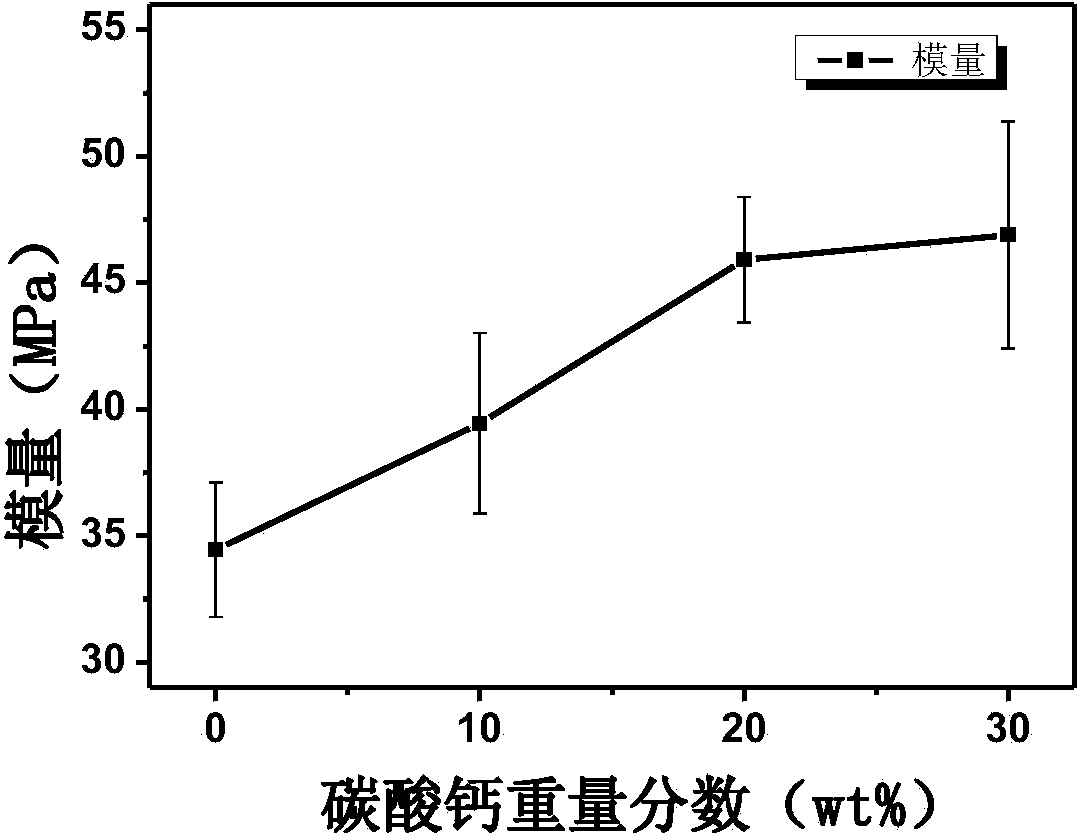Thermoplastic cellulose composite material and preparation method thereof
A composite material and cellulose technology, which is applied to cellulose-based composite materials and their preparation, as well as the field of fiber materials and their preparation, can solve problems such as inability to fuse and compound, and achieve widening application fields, high production efficiency, and simple process. Effect
- Summary
- Abstract
- Description
- Claims
- Application Information
AI Technical Summary
Problems solved by technology
Method used
Image
Examples
Embodiment 1
[0023] 60 grams of cotton linters and 40 grams of 1-allyl-3-methylimidazolium chloride salt were mixed and stirred to obtain a muddy premix with uniform appearance. The resulting premix is placed on an open mill, heated to 130° C. and stabilized for 10 minutes before kneading. After 5 minutes, a uniform 1-allyl-3-methylimidazolium chloride-fiber with a cellulose content of 60 wt % is obtained. Vegetarian base. Add 9 grams of calcium carbonate powders respectively on the mill subsequently, after continuing mixing for 5 minutes, add 9 grams of calcium carbonate powders again, mixing 10 minutes. Then put the obtained material into a 5cm×7cm×0.1cm mold, put it in a flat vulcanizer, and press it at 100°C and 20MPa to obtain 1-allyl-3-methylimidazolium chloride salt and cellulose The mass ratio is 60 / 40, and the calcium carbonate filler content is a composite material of 30% by mass of cellulose.
Embodiment 2
[0025] 60 grams of cotton linters and 40 grams of 1-butyl-3-methylimidazolium chloride salt were mixed and stirred to obtain a muddy premix with uniform appearance. The resulting premix is placed on an open mill, heated to 130° C. and stabilized for 10 minutes before mixing. After 5 minutes, 1-butyl-3-methylimidazolium chloride-cellulose with a cellulose content of 60 wt % is obtained. Binder. Add 3 grams, 6 grams, 9 grams of calcium carbonate powder respectively on the open mill subsequently, after continuing mixing for 5 minutes, add 3 grams, 6 grams, 9 grams of calcium carbonate powder respectively again, mixing 10 minutes. Then put the obtained material into a 5cm×7cm×0.1cm mold, put it in a flat vulcanizer, and press it at 100°C and 20MPa to obtain 1-allyl-3-methylimidazolium chloride salt and cellulose The mass ratio is 60 / 40, and the calcium carbonate filler content is the composite material of 10%, 20%, and 30% of the cellulose mass.
Embodiment 3
[0027] Mix wood fiber, bamboo fiber, hemp fiber after chopping, get 160 grams and 1-ethyl-3-methylimidazole acetate and 1-propyl-3-methylimidazole acetate mass ratio is 1: 40 g of the mixture of 1 was stirred to obtain an apparently homogeneous puree premix. The obtained premix was placed in an open mixer, and the temperature was raised to 150° C. and was stabilized for 10 minutes before mixing. After 5 minutes, ionic liquid-cellulose base materials with a cellulose content of 80 wt % were obtained. Then add 4 grams of silicon dioxide powder, and after kneading for 5 minutes, add 76 grams of silicon dioxide powder again, and knead for 10 minutes. Then put the obtained material into a 5cm×7cm×0.1cm mold, put it in a flat vulcanizer, and press it at 160°C and 30MPa to obtain the mass ratio of ionic liquid and cellulose respectively 20 / 80, silica The composite material has a filler content of 50% by weight of cellulose.
PUM
| Property | Measurement | Unit |
|---|---|---|
| length | aaaaa | aaaaa |
Abstract
Description
Claims
Application Information
 Login to View More
Login to View More - R&D
- Intellectual Property
- Life Sciences
- Materials
- Tech Scout
- Unparalleled Data Quality
- Higher Quality Content
- 60% Fewer Hallucinations
Browse by: Latest US Patents, China's latest patents, Technical Efficacy Thesaurus, Application Domain, Technology Topic, Popular Technical Reports.
© 2025 PatSnap. All rights reserved.Legal|Privacy policy|Modern Slavery Act Transparency Statement|Sitemap|About US| Contact US: help@patsnap.com



